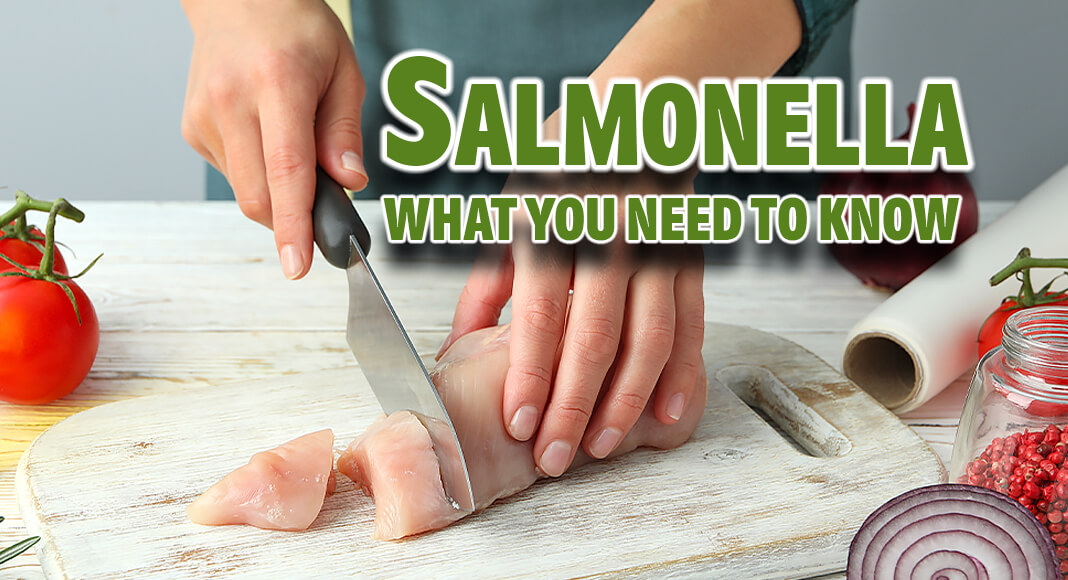
Mega Doctor News
Food that is contaminated with Salmonella or other harmful germs usually looks, tastes, and smells normal. That’s why it’s important to know how to prevent infection.
Salmonella cause far more illnesses than you might suspect. For every case of Salmonella illness confirmed by laboratory tests, almost 30 other cases are not reported. That’s because most people with symptoms of foodborne illness do not go to the doctor or submit a sample to a laboratory, so we never learn what germ made them sick. CDC estimates that Salmonella cause more than 1 million foodborne illnesses in the United States every year.
| Salmonella are bacteria that can make you sick. |
| Salmonella can be found in a variety of foods, including chicken, beef, pork, eggs, fruits, vegetables, and even processed foods. |
| Some people are more likely to get an infection and serious illness. |
| You can take steps to prevent infection, such as following the clean, separate, cook, and chill guidelines. |
Causes of Salmonella Infection
You can get a Salmonella infection from a variety of foods, including chicken, turkey, beef, pork, eggs, fruits, sprouts, other vegetables, and even processed foods, such as nut butters, frozen pot pies, and stuffed chicken entrees. Some recent Salmonella outbreaks that sickened people in many states were linked to flour, peanut butter, salami sticks, onions, prepackaged salads, peaches, and ground turkey.
Food isn’t the only way Salmonella spread to people. The bacteria also spread through contaminated water, the environment, other people, and animals. Even pets and animals at petting zoos, farms, fairs, and schools and daycares can carry Salmonella and other harmful germs. Get tips to help you stay safe around feathery, furry, and scaly friends.
People at Higher Risk for Salmonella Infection
Certain people are more likely to get a serious Salmonella infection. These people include children who are younger than 5, adults who are 65 and older, and people whose immune systems are weakened from certain medical conditions (such as diabetes, liver or kidney disease, and cancer) or their treatments.
Salmonella Symptoms
Salmonella illness can be serious. Symptoms usually start 6 hours to 6 days after infection. They include diarrhea that can be bloody, fever, and stomach cramps. Most people recover within 4 to 7 days without antibiotic treatment. But some people with severe diarrhea may need to be hospitalized or take antibiotics.
Call the doctor if you have:
- Diarrhea and a fever higher than 102°F
- Diarrhea for more than 3 days that is not improving
- Bloody stools
- Prolonged vomiting that prevents you from keeping liquids down
- Signs of dehydration, such as:
- Making very little urine
- Dry mouth and throat
- Dizziness when standing up
Four Steps to Help Prevent Salmonella Infection
Follow the Clean, Separate, Cook, and Chill guidelines when you prepare food at home. These steps can help keep you and your family safe from Salmonella infection and other kinds of food poisoning.
Clean
- Wash hands with soap and clean, running water for at least 20 seconds before and after handling food, especially after touching raw or undercooked eggs, meat, poultry (like chicken and turkey), seafood, or their juices.
- Wash utensils, cutting boards, dishes, and countertops with hot, soapy water, especially after they’ve touched raw or undercooked eggs, meat, poultry, seafood, or their juices.
- Don’t wash raw poultry, meat, or seafood before cooking. Washing can spread germs to other foods, utensils, and surfaces.
Separate
- Keep raw meat, poultry, seafood, and eggs separate from other foods in your grocery cart and in your refrigerator. Keep eggs in the original carton and store them in the main part of the refrigerator, not in the door.
- Keep raw meat, poultry, and seafood separate from ready-to-eat foods, such as salads and deli meat.
- Use separate cutting boards and plates for produce and for raw meat, poultry, seafood, and eggs.
- Never place cooked food on a plate that previously held raw or undercooked eggs, meat, poultry, seafood, or their juices.
Cook
- Use a food thermometer to ensure that foods are cooked to a safe internal temperature:
- 145°F for beef, pork, ham, veal, and lamb (then let the meat rest for 3 minutes before carving or eating)
- 145°F for fish with fins (or cook until flesh is opaque and separates easily with a fork)
- 160°F for ground beef, ground pork, ground veal, and ground lamb
- 160°F for egg dishes that do not contain meat or poultry
- 165°F for egg dishes that contain meat or poultry
- 165°F for poultry (chicken, turkey, duck), including ground chicken and ground turkey
- 165°F for leftovers and casseroles
- Microwave food thoroughly. Follow recommended cooking and standing times.
- Cook eggs until both the yolk and white are firm.
Chill
- Keep your refrigerator at 40°F or colder.
- Never leave perishable foods out of the refrigerator for more than 2 hours, or 1 hour if the food is exposed to temperatures above 90°F (like a hot car or picnic). Perishable food includes meat, poultry, seafood, eggs, dairy, cut fruit, some vegetables, cooked rice, and leftovers.
Information Source: CDC









